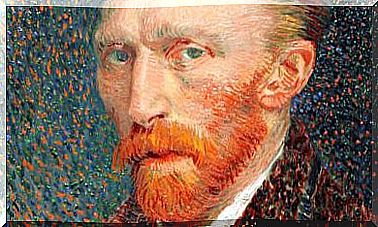Michael White And David Epson, Authors Of Narrative Therapy

In the 80s, based on family therapy, the therapeutic modality of Narrative Therapy began to emerge. Its main authors and promoters are Michael White and David Epson.
For some, it is considered as a postmodern therapy, since White and Epson base part of their approach on the approaches of the philosopher Michael Foucault (1978). One of the fundamental premises of this therapy is that each person, family or institution knows their identity from the narratives they produce about the events in which they participate.
Michael White and David Epson: Narrative Therapy
Michael White, an Australian social worker, and David Epson, a New Zealand anthropologist, began working together and developed narrative therapy. However, we cannot explain the birth of this model without going back to the works of Gregory and Bateson, and those of Maturana and Varela, who pointed out that the individual is never alone, but rather belongs to social systems.

Thinking of the individual in context contributed to the maturation of systemic therapies, which serve the entire family system, some members or individuals alone depending on the moment. The more important actors joined the therapy, the shorter and more effective it was, leading to many models of brief therapy.
It is common to see how family members feel affected by the problem, but do not feel part of the problem. Thus, this conceptual change, of point of view, in which involvement and therefore the ability to influence mediate, is the first step.
The attitude of each member of the family is very important, because if we manage to put ourselves in the place of others, we can better build what really happens. Therefore, the first step is not to blame anyone, but to understand what the influence of each one is on the problem.
Narrative therapy sees the problem separated from the person and facilitates the understanding of an idea: each person has values, commitments, attitudes … that help reduce the negative influence of the problem on all the dynamics of the person, family or institution. Techniques such as negotiation and discussion of viable alternatives serve to find new ways of solving.
The methodology of narrative therapy
Narrative therapy replaces the cybernetic approach of the human being with a linguistic model, which states that knowledge is a consensual version of reality, the product of interpersonal interaction and negotiation, and that meaning is created within the context of the discourse that sustains it. .
Therefore, our personal history, the culture and the organizations of which we are a part are intimately related to our actions and what we build within relationships. In this way, we organize experiences in the form of a narrative, with a temporal sequence, intentions, meanings, outcomes …
For this reason, narrative therapy understands therapy as a conversational process, in which clients and therapists co-construct new meanings, stories, possibilities, and solutions to the problem they narrate. The main premises of narrative therapy are the following:
- Identify the dominant story.
- Outsource the problem.
- Explore aspects of value for the client.
- Discover the implications of extraordinary events.
- Search family archives.
Michael White gave great importance to the dramatic structure as an influencing agent in the construction of our stories, since people join events on a topic, but there are always other stories outside of that experience.
Therefore, the therapist’s mission is to try to rescue subjugated or invisible stories in the most accessible story that the person handles. Recover facts or thoughts that restore the lost balance.

Certain stories in our lives become dominant, restrictive, pushing us toward conclusions that repeatedly punish us …
Thus, when people come to the office with a dominant history saturated with problems, therapeutic work focuses on trying to find entryways to alternative histories. For example, generating questions that invite the person to connect with experiences that they had omitted when building their story.
The Narrative Therapy approach created by Michael White and David Epson sees problems as separate from the person (externalization of problems), which facilitates the rewriting of lives and relationships. This allows creating a space for people to act against the problem, and leave room for their skills, interests, commitments, responsibility, … contributing to personal development and therefore a more effective coping.









